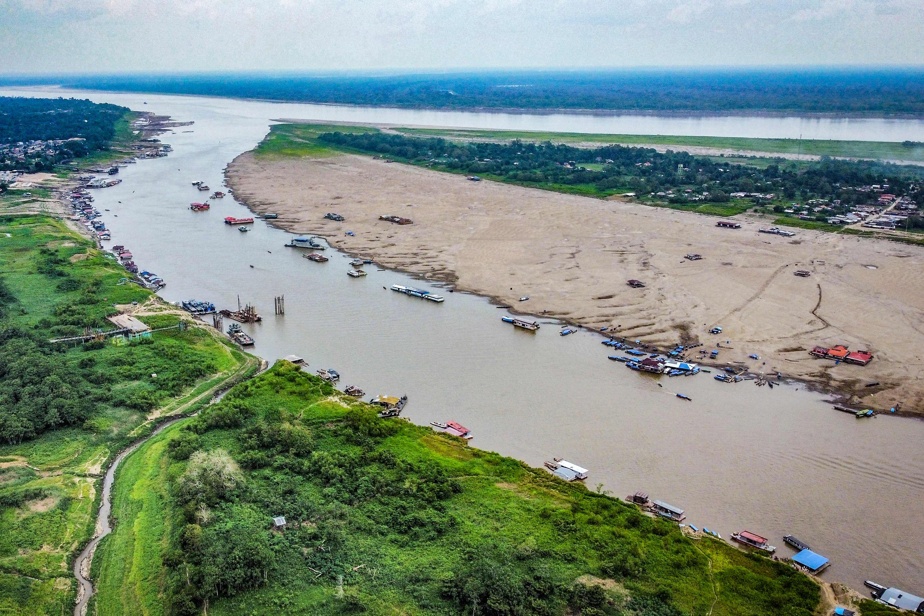(Bogotá) The Amazon River, which flows in southeastern Colombia on the border with Peru and Brazil, has seen its level drop by 90% in the last three months due to drought, announced Thursday the government.
“The water level has decreased by 80 to 90 percent in the last three months, due to drought caused by climate change in the country,” the National Risk Management Unit said in a statement. disasters (UNGRD).
The Amazon basin covers nine countries in South America: Brazil, Colombia, Peru, Bolivia, Ecuador, Venezuela, Guyana, French Guiana and Suriname.
According to the UNGRD, “the low level of the Amazon River affects the food supply and navigability of indigenous communities in the department” of the same name in Colombia.
At least 7,400 people are affected by this drop in water levels, in a region where local indigenous communities travel mainly by boat. Images taken in recent days by AFP in Leticia, the regional capital, show many small boats stranded and large islands of earth and grass exposed by the low water level.
The city of Leticia, in the triple border area, is of essential importance for local trade, thanks to the Amazon River. In the extreme southeast of Colombia, it is geographically totally isolated by forest, with no roads connecting it to the rest of the country. Residents say this is the worst drought they can remember in half a century.
South America is experiencing a prolonged drought this year associated with the El Niño weather phenomenon, which has led to water and electricity rationing, as well as historic wildfires in several countries.
Outbreaks are currently active in Colombia, Peru, Ecuador, Brazil and Bolivia. The Colombian capital Bogotá is also subject to water rationing due to the low level of reserves in the surrounding mountains.
